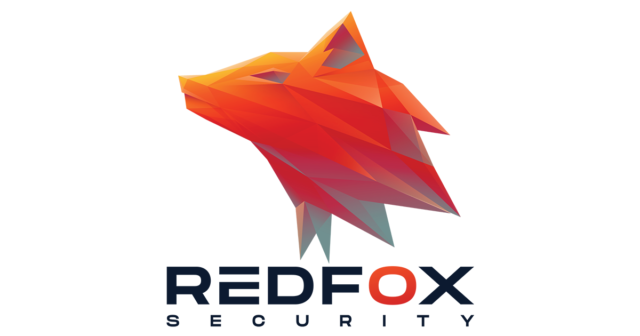Unlock the full potential of AWS cloud computing while ensuring robust security through effective penetration testing. As businesses depend on AWS for storage and processing, understanding the vital role of penetration testing is paramount. Explore the benefits, steps, and best practices essential for conducting thorough penetration tests to fortify your AWS Cloud Environment.
Security Considerations in AWS Cloud Environment
Security Considerations in AWS Cloud Environment refers to the various aspects and measures taken into account to ensure the security of data, applications, and infrastructure hosted within the Amazon Web Services (AWS) cloud platform. As businesses increasingly leverage AWS for their computing needs, addressing security considerations becomes paramount.
What Are Penetration Tests?
Penetration tests, or ethical hacking, are an invaluable way of evaluating security in Amazon Web Services (AWS) environments. Penetration testing simulates real-life scenarios to detect vulnerabilities in systems or networks, offering invaluable protection in AWS environments against potential threats.
Why is Penetration Testing Important for AWS Web Services?
Penetration testing plays a vital role in AWS Web Services for various reasons, including:
- Identification and Remedy of Vulnerabilities: Penetration testing offers an efficient means of discovering and mitigating vulnerabilities within Amazon Web Services environments. By simulating real-world attacks, security weaknesses can quickly be discovered early and addressed proactively to avoid their abuse for malicious use.
- Risk Mitigation: With penetration tests, organizations can actively manage security risks. This process helps identify and correct vulnerabilities to reduce any chances of unauthorised access to data, applications or infrastructure.
- Compliance Requirements: For Businesses Operating Within Specific Industries: GDPR, PCI DSS and HIPAA mandate regular security assessments and penetration testing as necessary for business success and continuity. Adherence to such requirements is integral for overall business success and continuation.
Penetration testing an AWS Cloud Environment offers multiple advantages.
- Penetration testing identifies missed vulnerabilities during initial setup, enabling businesses to assess and enhance system security against real-world attacks.
- Penetration testing offers vital insights into AWS security controls, providing businesses with intelligence on strengths and improvement areas. This proactive approach helps businesses stay ahead of threats by continually enhancing their security posture.
- Conducting penetration testing in an Amazon Web Services Cloud Environment can also assist in meeting compliance and regulatory requirements.
- Regular penetration testing is vital for meeting industry security standards and showcasing a commitment to secure customer data and workplace safety.
Steps for Conducting Penetration Testing With Amazon Web Services
Conducting penetration testing of AWS Web Services typically entails several steps-
- First, it is crucial to define the scope of the test; that includes which AWS services will be evaluated and any specific AWS services which should be targeted as potential testing areas. This helps focus testing efforts while simultaneously conducting comprehensive examination of targeted areas.
- Upon identifying their target system, a penetration testing team initiates a reconnaissance phase to gather crucial information, including configuration details, vulnerabilities, and publicly accessible information.
- This data is indispensable for the meticulous planning and execution of an effective penetration test.
- Once the reconnaissance phase has concluded, the team moves onto vulnerability scanning and exploitation. They use automated tools to identify vulnerabilities before trying to exploit them in order to gain unauthorized entry to a system.
- Finally, the team documents their findings as well as providing recommendations for remediation.
- Once conducted, its results must be carefully assessed in order to fully grasp their significance. This should include identifying root causes of vulnerabilities and creating plans to address them as soon as possible. When complete, share all findings with appropriate parties like system administrators and developers so remediation efforts can be effectively coordinated.
Best Practices for Protecting an AWS Cloud Environment
Securing your AWS Cloud Environment requires taking a multifaceted approach. Here are some essential best practices you should remember:
1) Implement strong access controls: Use IAM to manage user permissions according to the principle of least privilege, reviewing access rights regularly to ensure only authorized individuals gain entry to sensitive resources.
2) Encrypt sensitive data: Secure sensitive information both during transmission and storage by using AWS Key Management Service or other encryption mechanisms to avoid unauthorised access while protecting its confidentiality, helping prevent unwanted intrusions while upholding confidentiality. This helps keep information from falling into unauthorised hands while upholding privacy.
3) Stay Current and Patch Often: To protect AWS resources against vulnerabilities and potential exploit attempts, regularly applying security patches that address flaws with reduced risks of exploit is key for protecting resources on AWS.
4) Log and Track Activities: By activating AWS Cloud Trail or other monitoring tools, log all activities that take place within your AWS Cloud Environment to detect suspicious behaviour and provide an audit trail for future forensic analyses. AWS Cloud Trail’s Logging service detects potentially suspicious activities while creating an audit trail for easier forensic investigation.
5) Implement Network Segmentation: Implement network segmentation through VPC and ACL technology in order to limit attack surfaces and lessen security breaches’ impact.
Penetration Testing Tools and Resources for AWS
Here are some tools and resources for conducting penetration testing on AWS:
1) AWS Inspector: AWS Inspector is a managed service designed to assess the security and compliance of Amazon Web Services resources while simultaneously identifying vulnerabilities with possible mitigation solutions.
2) OWASP ZAP: OWASP ZAP is an open web application security scanner developed to enhance the protection of applications running on Amazon Web Services (AWS).
3) Nessus: Nessus is an efficient vulnerability scanning tool designed to quickly identify weaknesses within AWS infrastructure or any security risks present, and any possible threats against it.
4) Amazon Guard Duty: Amazon GuardDuty, powered by machine learning, provides real-time threat detection through log analysis, acting as continuous AWS penetration testing to ensure compliance.
Role of AWS Penetration Testing in Compliance and Regulatory Requirements
AWS Penetration Testing is crucial for healthcare and finance industries, ensuring compliance with stringent security standards. Conducting these tests helps businesses meet industry regulations and internal compliance protocols.
Penetration testing serves two functions – to identify vulnerabilities and document all efforts made at protecting customer data. Businesses conducting regular penetration tests demonstrate commitment to privacy protection, aligning with regulations like GDPR. Furthermore, regular participation reduces fines or penalties associated with regulatory noncompliance.
Common Vulnerabilities in AWS Web Services and How to Mitigate Them
While AWS provides a secure infrastructure, businesses should be aware of common vulnerabilities and methods to reduce them effectively.
- Avoid Weak Access Controls: Prevent weak access controls by implementing robust passwords, multi-factor authentication, and regular reviews.
- Misconfigured Security Groups: Regularly review and adjust security group rules so only necessary traffic is authorized. Exposing ports to the public internet poses significant risks, so exercise caution and be aware of the potential consequences.
- Lack of Encryption: Secure sensitive data using AWS Key Management Service (KMS) or other encryption methods for both storage and transit.
- Unpatched Systems: Regularly update AWS resources with security patches to address vulnerabilities and ensure ongoing protection against risks.
TL; DR
Security should always be a top priority when operating within AWS Web Services’ cloud environment. Penetration testing is crucial for identifying and mitigating threats, enabling businesses to establish effective security in their AWS Cloud Environment. By following best practices, using suitable tools, and adhering to compliance regulations, they can ensure continuous assessment against emerging risks.
Redfox Security is a diverse network of expert security consultants with a global mindset and a collaborative culture. If you are looking to improve your organization’s security posture, contact us today to discuss your security testing needs. Our team of security professionals can help you identify vulnerabilities and weaknesses in your systems and provide recommendations to remediate them.
“Join us on our journey of growth and development by signing up for our comprehensive courses.“




